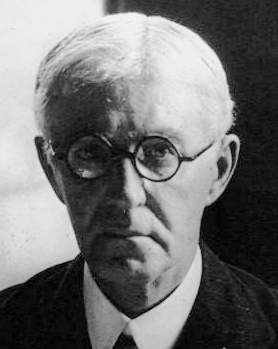Peter Chalmers Mitchell facts for kids
Quick facts for kids
Sir Peter Chalmers Mitchell
|
|
|---|---|
 |
|
| Born | 23 November 1864 Dunfermline, Scotland
|
| Died | 2 July 1945 (aged 80) London, England
|
| Known for | Founding Whipsnade Zoo |
| Scientific career | |
| Fields | Zoology |
Sir Peter Chalmers Mitchell CBE FRS FZS (born November 23, 1864 – died July 2, 1945) was a Scottish scientist who studied animals, known as a zoologist. He was the leader of the Zoological Society of London from 1903 to 1935. During his time, he helped run the London Zoo and created the world's first large, open-air zoo, ZSL Whipsnade Zoo.
Contents
Early Life and Education
Peter Chalmers Mitchell was born in Dunfermline, Scotland. His father, Alexander Mitchell, was a Presbyterian minister. Peter went to the University of Aberdeen and earned a Master of Arts degree.
Later, he studied natural science at Christ Church, Oxford, focusing on zoology. After doing well in his exams in 1888, he became a university demonstrator in zoology. This meant he helped teach and show students about animal science.
Leading the Zoo
Peter Chalmers Mitchell was the Secretary of the Zoological Society for 32 years. He followed Philip Lutley Sclater, who had the job for over 40 years. After Mitchell, Julian Huxley took over.
Whipsnade Zoo
Mitchell's big idea was Whipsnade Park, which opened in 1931. It is located in the countryside of Bedfordshire. Whipsnade is a special kind of zoo. Animals there live in very large, open areas instead of small cages.
The park also works to protect different animal species. They are involved in many conservation projects.
Helping Birds
In 1933, Mitchell was one of eleven people who helped start the British Trust for Ornithology (BTO). This organization studies birds in the British Isles. It helps us learn more about wild birds.
Lectures and Books
In 1911, Mitchell gave a famous series of talks called the Royal Institution Christmas Lectures. His topic was The Childhood of Animals, where he talked about how young animals grow.
He also gave lectures in 1915 about evolution and how it related to world events. These talks were later put together into a book called Evolution and the War.
Life in Málaga
After he retired from the zoo, Mitchell moved to Málaga, a city in Spain. He lived there during the early part of the Spanish Civil War. He wrote about his experiences in Málaga in his own book, published in 1938.
Later Years and Death
Mitchell died on July 2, 1945, when he was 80 years old. He was hurt in an accident near the London Zoo. After getting off a bus, he was hit by a taxi. A jury decided that his death was accidental.
Legacy
A type of South American worm lizard is named after him, called Amphisbaena mitchelli. This shows his lasting impact on the study of animals. He also proved that the cecum (a part of the intestines) in mammals is similar to the paired ceca found in birds. This showed that having a pair was the original design.

